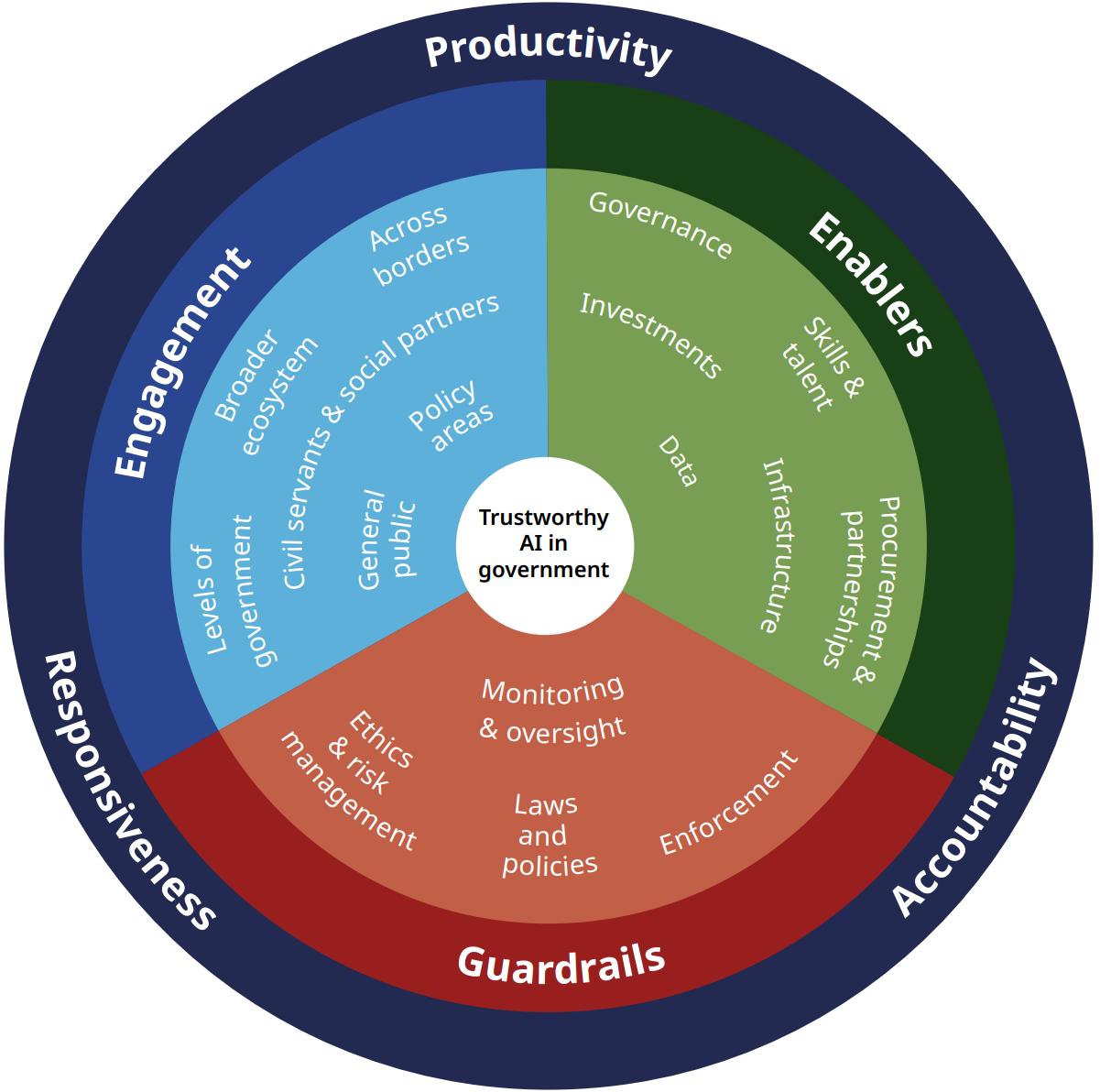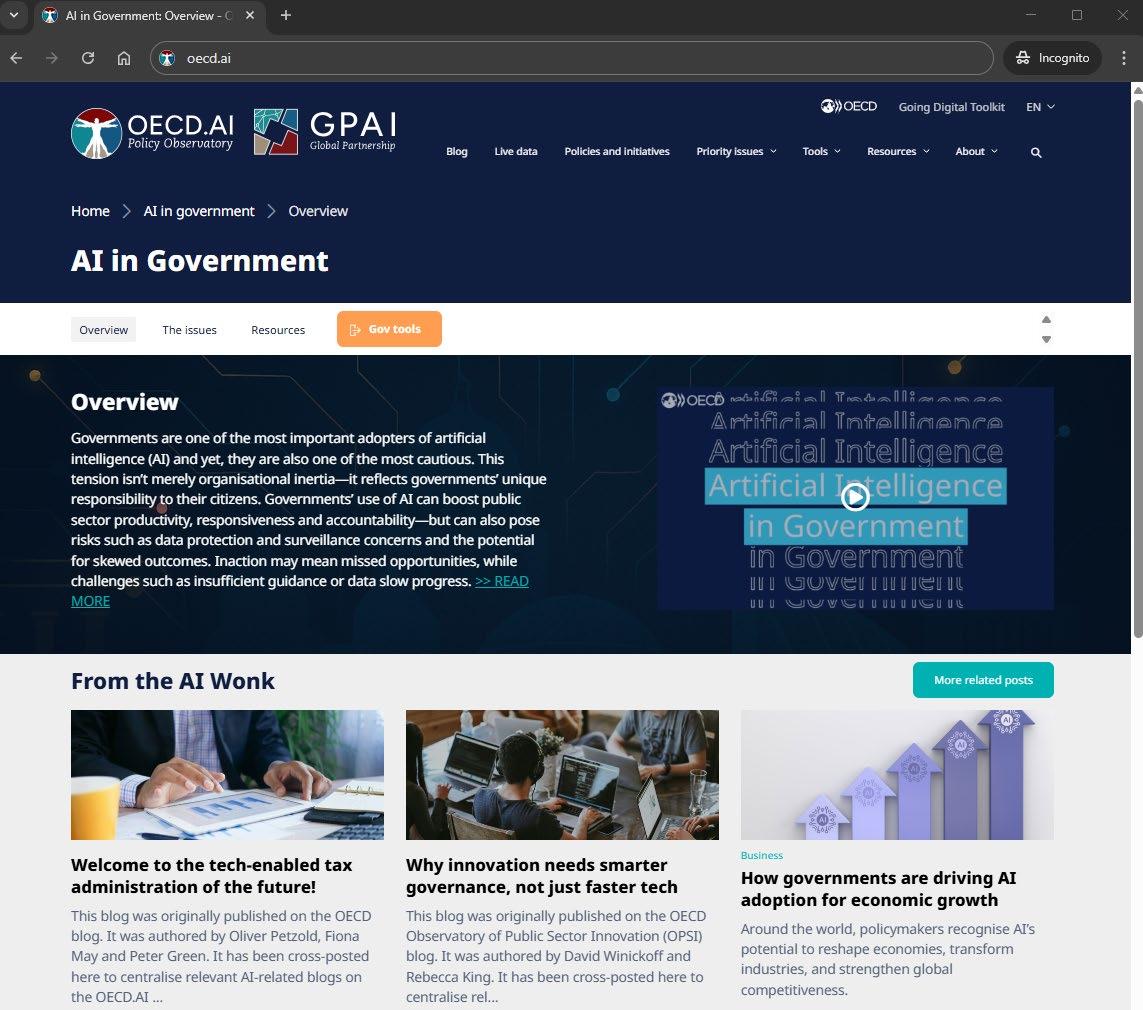

Governing with Artificial Intelligence

Elsa Pilichowski Director for Public Governance, OECD
18 September 2025




200 use cases across 11 government functions
Government
policy functions
Key government processes
Tax administration
Civil service administration
Public financial management
Regulatory design and delivery
Public procurement
Fighting corruption and promoting public integrity
Policy evaluation
Civic participation and open government
Government services and justice
Public service design and delivery
Law enforcement and disaster risk management
Justice administration and access to justice

AI helps enhance government productivity, responsiveness and accountability
Benefits of AI in government
Automated, streamlined and tailored processes and services
Better decision-making, sense-making and forecasting
Enhanced accountability and anomaly detection
Unlocking opportunities for external stakeholders

AI use is most prevalent in public services
Use cases are most present in public service, civic participation and justice functions
Number of use cases
Civic
Justice

Country examples of AI in action
Initiative
Country Description
Korea
Tailored learning
Spain
Automating Anonymisation and Document Sorting
• HR Development Platform
• Tailored based on role, job and learning history.
• Improved skill development.
Brazil
ChatTCU
• Speeding up case management.
• Anonymisation, document sorting and similarity checks.
• Freeing staff for complex legal analysis.
Function
Civil service reform
India
Bhashini platform
• Integrating with internal systems of the Brazilian Federal Court of Accounts
• Real-time access to case summaries, regulatory guidance and administrative support
Justice administration and access to justice
• Real-time translation across 22 official Indian languages
• Supporting multilingual voice assistants and AI service delivery interfaces
• Civic engagement to build multilingual datasets
Anti-corruption and public integrity
Civic participation and open government

Navigating the risks of AI use in governments
Ethical risks (Inadequate or skewed data, AI misuse, lack of transparency/explainability)
Operational risks (automation bias i.e. overreliance on AI, reduced job quality, cybersecurity, privacy and data gov. tensions)
Exclusion risks (digital divides, workforce displacement)
Public resistance risks (selective acceptance, lack of understanding, scandals reduce trust)
Risks of inaction (missed opportunities, widening gap between public/private sector capacities)

Progress is hindered by implementation challenges
Scaling up successful AI applications
Skills gaps
Data quality issues
Lack of actionable guidance
Weak monitoring and evaluation
Risk aversion and regulatory uncertainty

Framework for Trustworthy AI in Government

Enablers: Areas where policy actions can be prioritised to establish a solid enabling environment and unlock the full-scale adoption of AI in the public sector
Guardrails: Options for policy levers governments can consider to secure a trustworthy and responsible use
Engagement: Where key actors need to be involved to implement actions targeting specific challenges

Looking ahead: What’s next
Global data collection and repository of AI policies and use cases.
Extending AI in Government work: experimentation, measuring impact and ROI, procurement, skills, participation...


